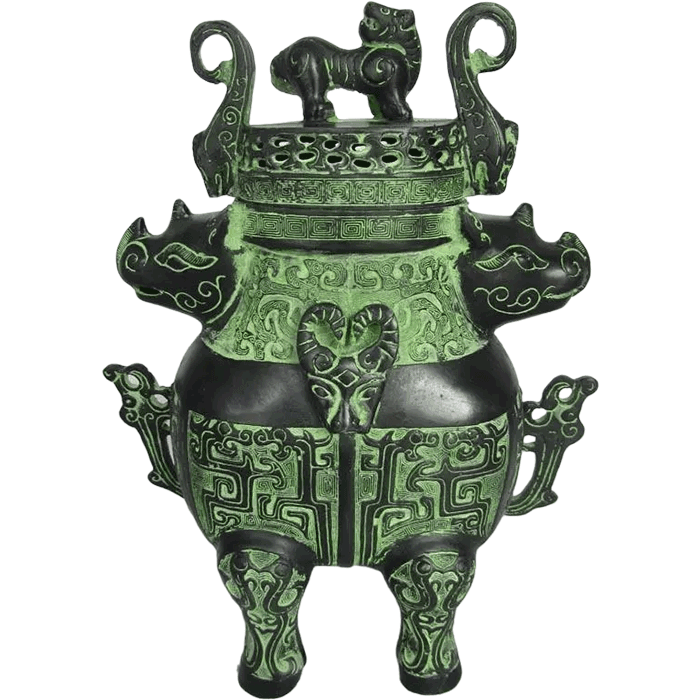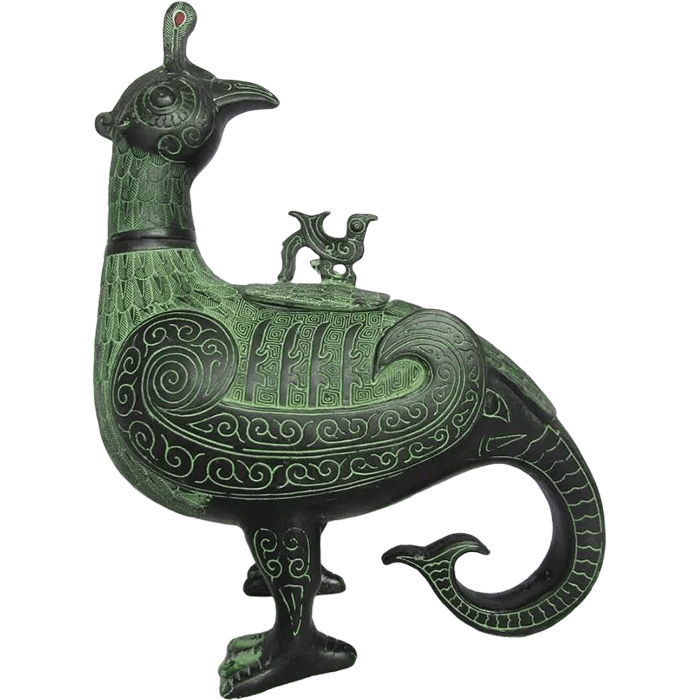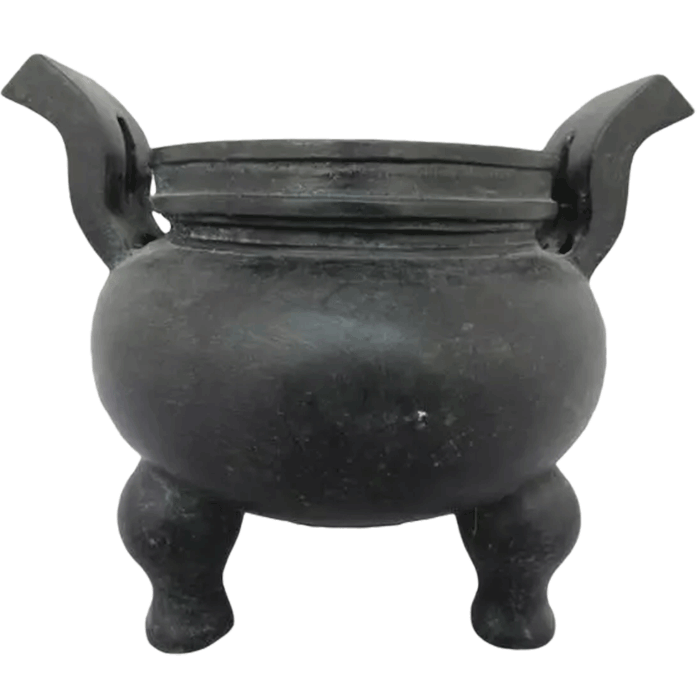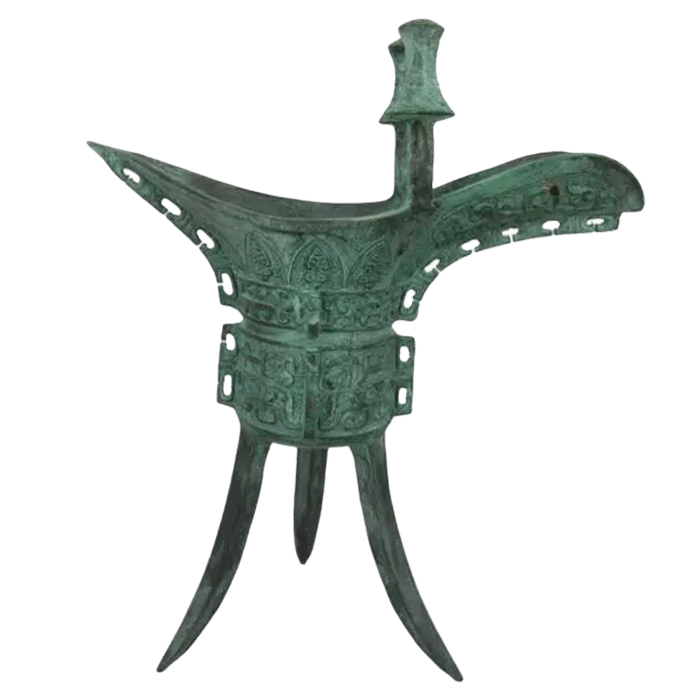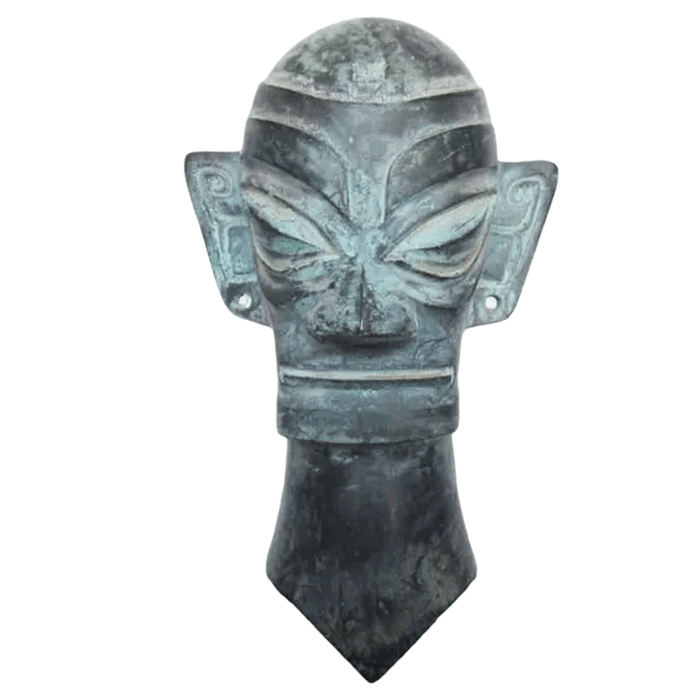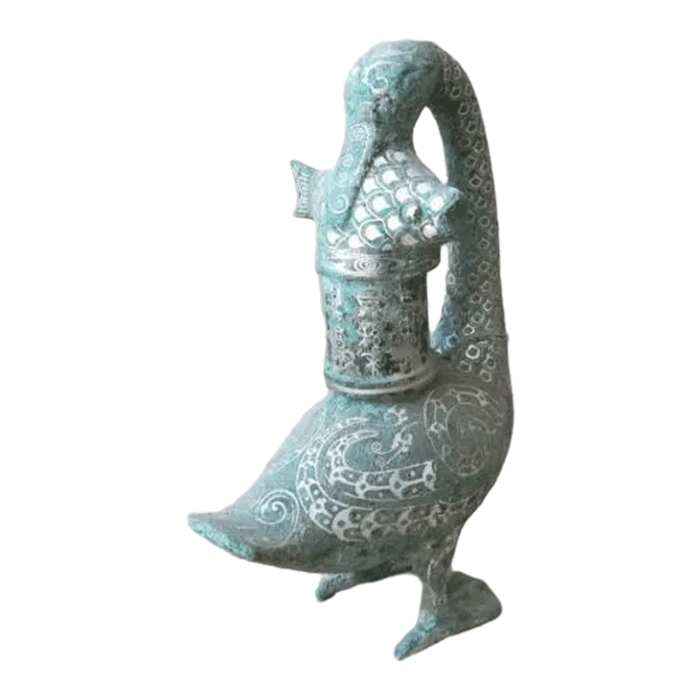Top Ten Famous Bronze Ware in China
【one】
Shang Dynasty Simuwu Ding / Houmuwu Ding
heaviest bronze
Simu Wu Ding, unearthed in 1939 in an ancient tomb of the Shang Dynasty in Yinxu, Anyang, Henan, was made by the Shang king Zu Geng or Zu Jia to worship his mother Wu. It is a representative work of bronze culture in the Shang and Zhou Dynasties and is now in the National Museum of China.
The Simuwu Ding is 133 cm high, 112 cm long and 79.2 cm wide, and weighs 832.84 kg. It is the heaviest single bronze ritual vessel discovered in ancient China. The thunder pattern on the body of the tripod is the ground, and the surrounding dragon and Taotie patterns are embossed, reflecting the super high craftsmanship and artistic level of Chinese bronze casting.
It was cast by pottery casting method. In the late Shang Dynasty, the casting of Simuwu Ding weighing 832.84 kilograms required at least 1,000 kilograms of raw materials, and it could be completed with the close cooperation of about 200 to 300 craftsmen, which is enough to reflect the grand scale of the bronze casting industry in the middle of the Shang Dynasty.
【two】
Shang Dynasty Siyang Square Zun
Largest Shang Bronze Fangzun
Siyang Square Zun, unearthed in 1938 on the mountainside of Zhuanerlun, Yueshanpu, Huangcai Town, Ningxiang County, Hunan Province, is a bronze ritual vessel and sacrificial item in the late Shang Dynasty. It is one of the top ten handed down national treasures and is collected in the National Museum of China.
The Siyang Square Zun is the largest existing bronze square Zun of the Shang Dynasty in China, with each side measuring 52.4 centimeters long, 58.3 centimeters high and weighing 34.5 kilograms.
According to the analysis of archaeologists, the Siyang square statue was cast by two separate casting techniques, that is, the horns and the dragon head were cast separately, and then they were respectively arranged in the outer mold, and then cast as a whole. The whole object is casted in block model method, and it is completed in one go.
【three】
Shang Dynasty Bronze Statue
Largest bronze figure statue
In 1986, in Sanxingdui, Nanxing Town, Guanghan, Sichuan, the largest and most complete bronze statue in China was unearthed. The statue is 262 centimeters high, weighs more than 180 kilograms, and the distance between the two ears is 138.5 centimeters. It has been cast for more than 3,000 years and is the highest and most complete bronze standing statue in existence. From a global perspective, the Sanxingdui Bronze Talisman is also the largest bronze statue of a figure in the same period, so it is also known as the "King of Bronze Statues in the World".
The statue is inlaid and cast by segmental casting method, the body is hollow, and it is divided into two parts: the portrait and the base. The figure wears a high crown, and wears a three-layer garment with narrow sleeves and half-arms. The clothing is decorated with intricate and exquisite patterns, mainly dragon patterns, supplemented by bird patterns, insect patterns, and eye patterns.
【Four】
Western Zhou Dynasty Mao Gong Ding
The bronze with the most inscriptions
Maogong Ding, a bronze ware in the late Western Zhou Dynasty, is named after the maker of the vessel, Maogong. Unearthed in Qishan, Shaanxi in the 23rd year of Daoguang reign of the Qing Dynasty (1843), it was collected in the National Palace Museum in Taipei, and is one of the three treasures of the National Palace Museum in Taipei.
The Maogong tripod is 54 centimeters high, 27.2 centimeters deep, 47 centimeters in diameter and weighs 34.5 kilograms. The whole shape is thick and dignified, the ornamentation is simple, elegant and simple, and it has a strong breath of life. It is a representative work of the tripod in the late Western Zhou Dynasty that turned from religion to secular life.
The inscription on the tripod of Mao Gong is close to 500 characters in length, and records Mao Gong's heartfelt advice to King Xuan of Zhou for the country. It is known as "worth a piece of Shangshu". The content is roughly as follows: At the beginning of King Zhou Xuan's accession to the throne, he wanted to revitalize the government, so he asked his uncle Mao Gong to manage the government affairs inside and outside the country, and he was diligent and selfless.
Rubbings of the inscription on Maogong Ding
The inscription on Mao Gong Ding is a model of bronze inscriptions in the late Western Zhou Dynasty. It is an important historical material for studying the political history of the late Western Zhou Dynasty.
【five】
Eastern Zhou Dynasty Lotus Crane Square Pot
Spring and Autumn Lotus Crane Square Pot, a bronze wine or water container in the middle of the Spring and Autumn Period, unearthed in 1923 from the Tomb of Zheng Gong in Lijialou, Xinzheng, Henan. One is collected in the Bronze Museum of the Palace Museum in Beijing and the other in the Henan Museum.
The lotus crane square pot is a pair of two pieces, but there is a slight difference in height. The Forbidden City has a height of 125.7 centimeters, which is called "Lihe square pot", and the Henan Museum has a height of 126.5 cm, which is called "lotus and crane square pot". The weight of the two square pots is the same, both 64.28 kg, with a square mouth, 30.5 cm long and 54 cm wide.
From the perspective of production technology, the casting of lotus and crane square pots adopts various techniques such as round carving, bas-relief carving, fine carving, and welding. Not only are the patterns delicate and novel, but also the structure is complex and the casting is exquisite.
【six】
Spring and Autumn Goujian Sword, King of Yue
The Goujian Sword of the King of Yue, a bronze ware of the Yue State in the late Spring and Autumn Period, was unearthed from Chu Tomb No. 5, Mashan, Jiangling, Hubei. Known as "the best sword in the world", it is collected in the Hubei Provincial Museum.
The sword is 55.7 cm long, 4.6 cm wide, 8.4 cm long, and weighs 875 grams. There are two lines of bird seal inscriptions near the sword grid: "Yue Wang Jiuqian (Goujian) used the sword from Zha (made)", which proves that this sword is the legendary Yue Wang Goujian sword.
The Goujian sword of Yue King has been stainless for thousands of years because the body of the sword is plated with a layer of chromium of 0.1 mm. After non-destructive scientific testing, its main alloy components are copper, tin, lead, iron, sulfur and so on. The pattern has high sulfur content, because copper sulfide can prevent rust. It is amazing that this anti-rust technology existed as early as 2,500 years ago.
【seven】
Warring States Period Zeng Houyi Chime Bells
Zenghouyi Chime Bells, a cultural relic of the early Warring States Period, is a huge musical instrument composed of sixty-five pieces of bronze chime bells. Unearthed in Sui County, Hubei Province (now Suizhou City) in 1978, it was the first batch of Chinese cultural relics prohibited from going abroad (border) for exhibition.
In 1978, the Chime Bell of Marquis Yi of Zeng was unearthed. File photo provided by Hubei Provincial Museum.
It is in the shape of a curved ruler, 11.83 meters long, and divided into upper, middle and lower floors. There are 65 chimes in the whole set, with a total weight of 2,500 kilograms.
It is the largest and best-preserved group among the more than 40 sets of chime bells unearthed in China. It is also the most magnificent and exquisite large-scale musical instrument in the history of China and the world. Its superb casting technology and good music performance have rewritten the history of world music, and are called "rare treasures" by Chinese and foreign experts and scholars.
【eight】
Bronze Chariots and Horses of Qinshihuang Mausoleum, Qin Dynasty
The Bronze Chariots and Horses of the Mausoleum of Qin Shihuang is a large-scale burial bronze chariot and horse model of the Mausoleum of Qin Shihuang. It was unearthed in 1980 on the west side of the tomb of Qin Shihuang's Mausoleum in Lintong, Shaanxi, China. It is the earliest, largest and best-preserved bronze chariot and horse discovered so far.
In the winter of 1980, two large bronze chariots and horses were unearthed at a depth of 7.8 meters at a depth of 20 meters to the west of Qin Shihuang's Mausoleum. When the No. 2 bronze chariot was unearthed, it was broken into 1,555 pieces, but it was restored and intact. The chariots and horses are 3.17 meters long and 1.06 meters high, equivalent to half of the real chariots and horses. The total weight is 1241 kg, and it is assembled from 3462 parts. Among them, there are 1,742 bronze pieces, 737 gold pieces, and 983 silver pieces. Its size is so large that it can be called the "Bronze Crown". Its design and production are surprisingly similar to modern engineering structures, far beyond people's imagination.
This set of large chariots and horses represents the outstanding achievement of bronze casting technology in the Qin Dynasty.
【Nine】
Western Han Dynasty Changxin Palace Lantern
China's first light
Changxin Palace Lantern of the Western Han Dynasty, a bronze ware of the Han Dynasty in China, was unearthed in 1968 from the tomb of Dou Wan, wife of Liu Sheng, King Jing of Zhongshan, Mancheng County, Hebei Province, and is now in the Hebei Provincial Museum. Because the word "Changxin" is engraved on the lamp, it is named "Changxin Palace Lantern".
The Changxin Palace Lantern is 48 centimeters high and 44.5 centimeters tall. The whole body is gilded, and the body of the lamp is an elegant and quiet court lady sitting on the lamp. Hollow, the whole is composed of six parts: head, body, right arm, lamp holder, lamp panel and lampshade, all of which can be disassembled. A total of nine inscriptions of 65 characters are engraved on the body, respectively recording the capacity, weight and owner of the lamp.
Changxin Palace Lantern has changed from the mysterious and heavy bronze vessels in the past, and the whole shape and decoration style appear to be stretched, light and gorgeous. It is a treasure of lamps that is both practical and beautiful. Take the method of casting separately and then synthesizing a whole. Experts in archeology and metallurgical history unanimously agree that this lamp is second to none among the palace lamps of the Han Dynasty due to its exquisite design and high level of craftsmanship.
【ten】
Eastern Han Dynasty Horse Stepping on a Flying Swallow (Bronze Galloping Horse)
China travel logo
Bronze Ware of the Eastern Han Dynasty, unearthed in 1969 in Leitai Han Tomb, Wuwei City, Gansu Province. It was unearthed from the tomb of Zhang Mou, a military officer guarding Zhangye during the Eastern Han Dynasty, and his wife, and is now in the Gansu Provincial Museum.
Sculpmart is a professional bronze art and bronze wares manufacturer providing Chinese Bronze Handcraft arts which will allow you to have a chance to own a masterpiece of Chinese bronze sculptures. If you like, you may choose the style to customize, send us the image and design, our craftsman will reproduce and cast a perfect bronze ware for you.


